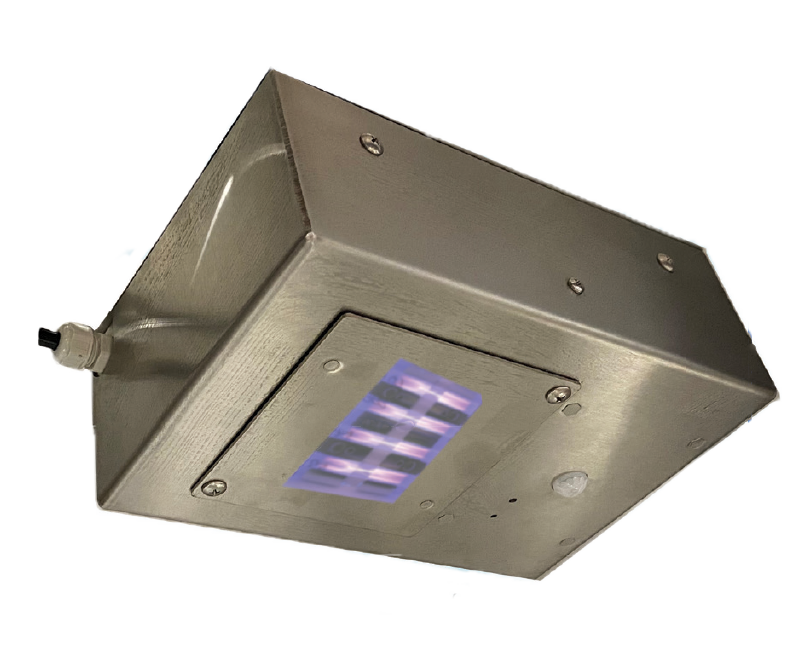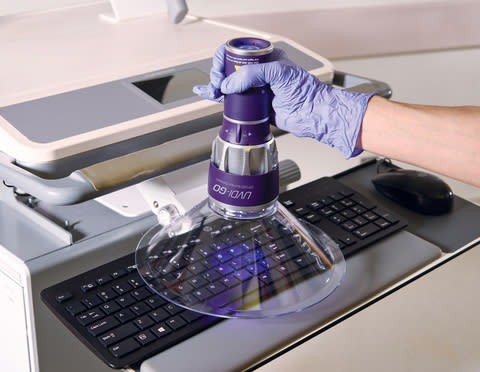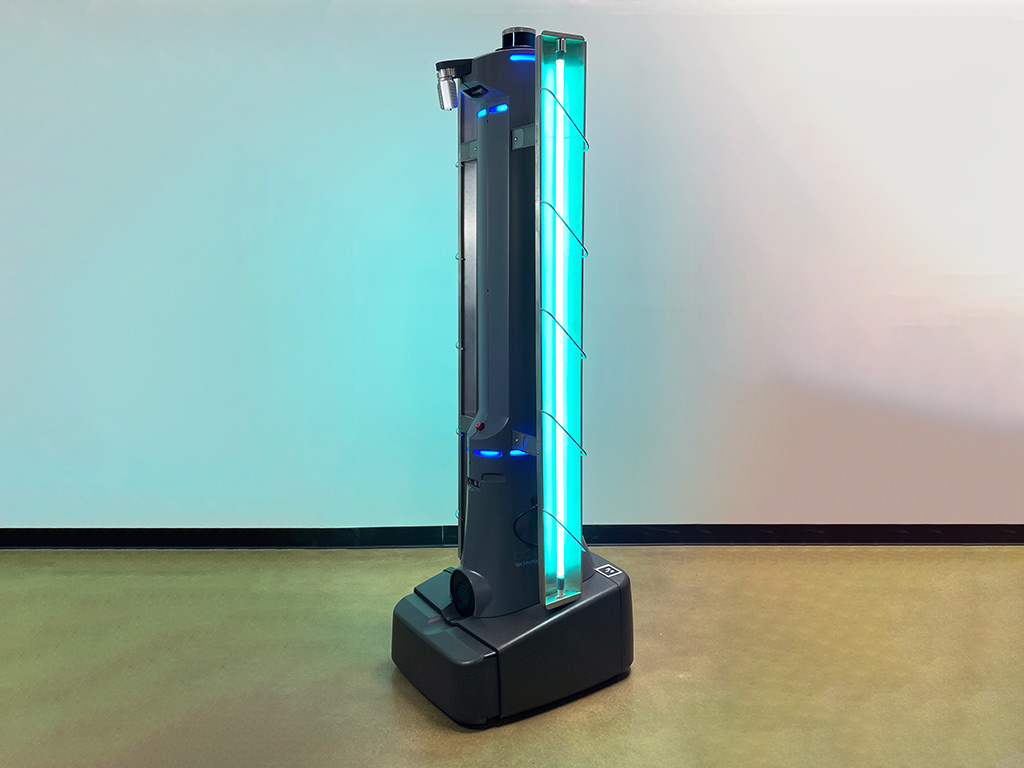UV Sanitation: The Cutting-Edge Modern Technology Transforming Sanitation Practices
In the realm of sanitation techniques, one modern technology has actually become a game-changer: UV sanitation. With its ability to eliminate damaging pathogens, this innovative technology is changing the method we approach cleanliness and health. How does UV sanitation job, and what are the advantages it offers? From healthcare settings to food handling, UV sanitation is making its mark in different sectors. In this conversation, we will certainly discover the intricacies of this transformative technology and look in advance to its encouraging future.
Just How UV Disinfection Functions
UV sanitation works by using ultraviolet light to damage or suspend microorganisms, supplying a chemical-free and highly efficient method of hygiene. This technology utilizes the power of short-wavelength UV-C light, which is qualified of damaging the DNA and RNA of microorganisms, hence rendering them unable to replicate and cause damage.
The procedure begins with the setup of UV disinfection systems, which include UV lights that give off UV-C light. These lamps are purposefully positioned in locations where microbial contamination is a problem, such as water therapy plants, healthcare facilities, research laboratories, and food handling facilities.
When microbes are revealed to UV-C light, the photons penetrate their cell wall surfaces and reach the DNA and RNA within. The high-energy UV-C photons disrupt the hereditary material by creating bonds between surrounding nucleotides, leading to the development of thymine dimers. These dimers prevent the microorganisms from duplicating, providing them safe.
UV disinfection is highly reliable versus a vast range of bacteria, consisting of microorganisms, viruses, and bloodsuckers. It is especially efficient versus waterborne pathogens like E. coli, Giardia, and Cryptosporidium. UV sanitation is a chemical-free technique, getting rid of the need for possibly dangerous anti-bacterials and lowering the risk of damaging disinfection by-products.
Benefits of UV Sanitation
UV disinfection offers many benefits in the field of cleanliness, making it a very liked approach for successfully removing unsafe microorganisms. Unlike conventional disinfection methods that rely on chemicals, UV disinfection uses ultraviolet light to ruin the DNA of microbes, rendering them incapable to duplicate and trigger infections.

UV sanitation is also highly flexible in its applications. It can be used in numerous setups, consisting of medical facilities, colleges, food processing facilities, and water therapy plants. UV sanitation systems can be quickly integrated into existing sanitation techniques, offering an additional layer of security versus transmittable diseases.
In addition to its performance and flexibility, UV sanitation is likewise eco pleasant. It does not produce any type of dangerous byproducts or residues, making it a safe and lasting approach for cleanliness - uv surface disinfection. Moreover, UV disinfection requires very little maintenance and has a long lifespan, resulting in cost financial savings in the lengthy run.
UV Sanitation in Health Care Settings
In medical care settings, UV sanitation has actually emerged as an innovative method for properly getting rid of hazardous microbes. UV disinfection functions by sending out ultraviolet light at a particular wavelength that is dangerous to bacteria, viruses, and other bacteria.
To start with, UV disinfection is a non-chemical technique, making it an ecologically pleasant option compared to conventional sanitation techniques that commonly involve the usage of rough chemicals. Recommended Reading Making use of UV light eliminates the demand for chemical disinfectants, reducing the danger of dangerous deposit or chemical exposure to both clients and medical care workers.
In addition, UV disinfection is extremely reliable in eliminating a variety of microbes, including drug-resistant microorganisms such as MRSA and C. difficile. It gives a dependable and regular sanitation procedure, ensuring that all surfaces and equipment are extensively disinfected, even in hard-to-reach areas.

UV Disinfection in Food Processing
The application of UV disinfection prolongs beyond medical care setups and locates substantial worth in the realm of food handling. uv surface disinfection. UV sanitation modern technology is ending up being progressively popular in the food sector as a result of its ability to successfully get rid of damaging microorganisms and enhance food safety
One of the primary benefits of UV disinfection in food processing is its ability to target a wide variety of microbes, including bacteria, viruses, and molds. By utilizing UV light at particular wavelengths, it is feasible to disrupt the DNA and RNA of these pathogens, providing them incapable to recreate or trigger damage. This modern technology can be put on various phases of the food processing chain, including surface sanitation, equipment sanitation, and water therapy.
UV disinfection supplies a non-thermal and chemical-free method of disinfecting food items. Unlike conventional sanitation approaches that depend on chemicals or warmth, UV innovation does not leave any type of residue or change the preference, appearance, or dietary value of the food. This makes it an optimal service for industries that require strict adherence to top quality standards.
Furthermore, UV sanitation systems are easy to run and install, calling for minimal maintenance. They can be integrated right into existing handling lines without creating significant interruptions to the production procedure. Furthermore, UV systems have a fast therapy time, enabling for constant handling and lowering downtime.
The Future of UV Sanitation

One location where UV disinfection is anticipated to make significant advancements is in the area of medical care. With the rise of antibiotic-resistant germs and the demand for more efficient sanitation methods, UV light has the potential to play a crucial function in reducing healthcare-associated infections. UV sanitation systems can be visite site made use of to sanitize surfaces, equipment, and even the air in medical care facilities, helping to stop the spread of dangerous virus and boost patient safety and security.
An additional sector that might profit from developments in UV sanitation innovation is the food industry. UV light has already proven to be an efficient technique for decontaminating food and reducing the danger of foodborne ailments. As innovation enhances, we can anticipate to see much more cost-efficient and reliable UV sanitation systems being implemented in food handling plants, making certain that the food we consume is safe and totally free from unsafe germs.
Conclusion
To conclude, UV disinfection is an advanced technology that is changing hygiene methods in medical care settings and food processing. By utilizing UV light to eliminate or shut off bacteria, it offers countless advantages such as effectiveness, safety and security, and performance. With recurring innovations in this field, UV Find Out More sanitation holds terrific potential for the future of cleanliness, providing a sustainable and trusted option for maintaining clean and sanitary atmospheres.
UV sanitation is a chemical-free approach, getting rid of the need for possibly dangerous disinfectants and decreasing the threat of harmful disinfection byproducts.
Unlike traditional disinfection methods that count on chemicals, UV disinfection uses ultraviolet light to ruin the DNA of bacteria, making them incapable to reproduce and cause infections. Unlike standard sanitation techniques that depend on chemicals or warm, UV modern technology does not leave any residue or modify the taste, texture, or nutritional worth of the food. As technology enhances, we can expect to see a lot more affordable and effective UV disinfection systems being executed in food processing plants, making sure that the food we take in is risk-free and complimentary from unsafe germs.
In final thought, UV disinfection is a cutting-edge technology that is changing cleanliness methods in medical care setups and food handling.
Comments on “UV Surface Disinfection Demystified: Understanding the Science Behind the Option”